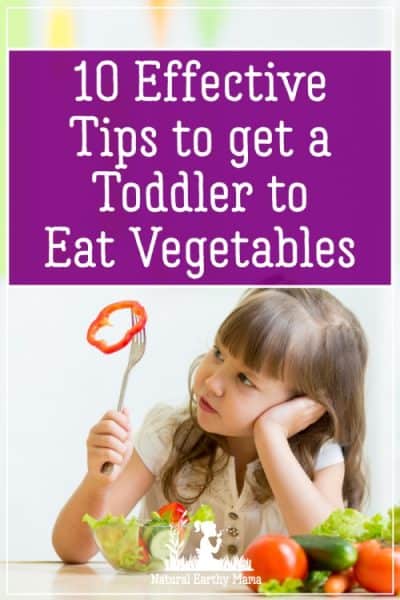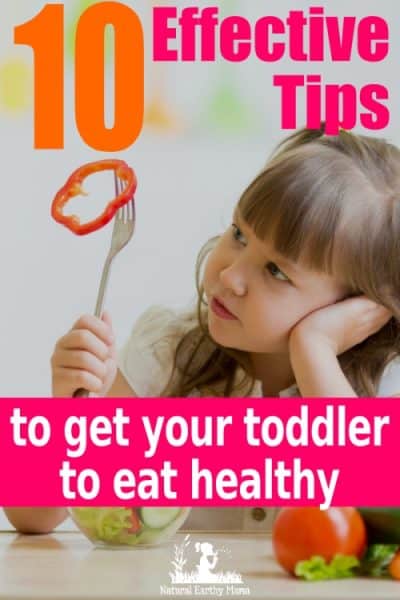 Is your toddler a picky eater? Getting your little one to eat healthy foods may be a challenge each day. Despite your own love of fruits and vegetables, your child may avoid them like the plague, making sure to eat everything except for the healthiest stuff on the plate.
Is your toddler a picky eater? Getting your little one to eat healthy foods may be a challenge each day. Despite your own love of fruits and vegetables, your child may avoid them like the plague, making sure to eat everything except for the healthiest stuff on the plate.
If you are feeling discouraged, remember that some children are picky eaters, but it is usually just a phase. There are some great ways to get your toddler to start eating all different types of healthy foods.
Please read: This information is provided for educational purposes only and is not intended to treat, diagnose or prevent any disease. We encourage you to make your own health care decisions in partnership with a qualified health care professional.
This post contains affiliate links, this means at no extra cost to you, we make a commission from sales. Please read
our Disclosure Statement
1. Make Each Dish as Colorful as Possible
Children are visual eaters. They may not like something simply because of the way that it looks, even if it does taste good.
One way to try to get your child to eat healthier things is to make sure each dish is as colorful as possible.
For example, you can serve a fruit salad with blueberries, sliced watermelon, and even pieces of tropical mango alongside baked chicken and some zucchini noodles.
Everything on the plate will look brighter and likely more attractive to your child, which could get him or her to try some of those healthy foods.
RELATED: Toddler actives that they will love
2. Let Your Child Play With His or Her Food
When you were a child, your parents probably made sure that you did not play with your food.
However, some studies show that allowing young children to play with food helps them get more comfortable with it.
As a child becomes more comfortable with these different foods, he or she may begin tasting and eating them with no problem.
A fun way to let your child play with food would be to allow him or her to paint on a plate using broccoli spears and baby carrots.
3. Hide Vegetables in Dishes
Sometimes it is a good idea to get a bit sneaky when trying to get your child to eat healthier.
In fact, there are a lot of fun ways to hide vegetables inside of different meals.
If your child likes macaroni and cheese, you can puree a few carrots or some pumpkin and add those carrots to the cheese blend.
If your child likes spaghetti with meatballs, you can cut up small pieces of broccoli, greens or mushrooms and add them to the sauce.
4. Get Creative With the Healthy Treats
If your child loves chips and sweet treats, get creative and make healthy snacks that taste just as good.
For example, you can make kale chips by spreading them out on a baking pan, drizzling olive oil on them, and then sprinkling them with some sea salt or other tasty seasonings.
Aside from kale chips, you can also make baked apple slices with cinnamon, homemade cheese crackers, and even chocolate chip zucchini muffins.
5. Get Into a Good Routine
If possible, start having breakfast, lunch, and dinner at the same time each day. We don’t allow the kids to eat after 330pm, so that by dinner time they are hungry!
If your child gets into a routine, he or she will likely feel hungry at the times when you are getting ready to serve the food.
If your little one is feeling hungry, he or she has a better chance of eating the things you are offering.
6. Eat Together as a Family
Sit with your child at the dinner table and eat together as a family.
If your child notices that you are eating the same foods that are on his or her plate, your little one may feel more inclined to eat the same things, causing less of a fuss when it is time to eat healthy foods.
7. Encourage the Taste and Spit Technique
Some children do not like to try new things because they are afraid that they are going to need to swallow something that does not taste good to them.
However, you can put your child’s mind at ease by following the taste and spit technique.
The child should chew the food for a few seconds. If he or she does not like the taste of it, your little one can spit it out in a napkin or in the trash.
A bit gross, but it at least gets your child to try new foods.
8. Purchase a Kid-Friendly Cook Book
Buy different types of kid-friendly cookbooks and let your child pick out the meal that he or she would like you to prepare on a specific day.
It is a great way to encourage your toddler to try some new things without throwing a fit over it.
9. Introduce One New Food at a Time
Try to not to overwhelm your child by introducing too many foods at once.
Introduce one new food at a time. You can always try to introduce the food again at a later time if your toddler does not like it the first time around.
It can take up to 20 tries of a food before a child will actually eat it.
10. Let Your Child Help With Preparing the Food
Bring your child to the kitchen with you and get him or her involved in preparing the food.
When a child can help with mixing ingredients together and doing other simple cooking tasks, he or she often feels more encouraged to try the food, even if it is healthier.
Now that you know of these helpful tips, you should try them. It is possible to get your toddler to eat healthy food, even if he or she is quite picky.

